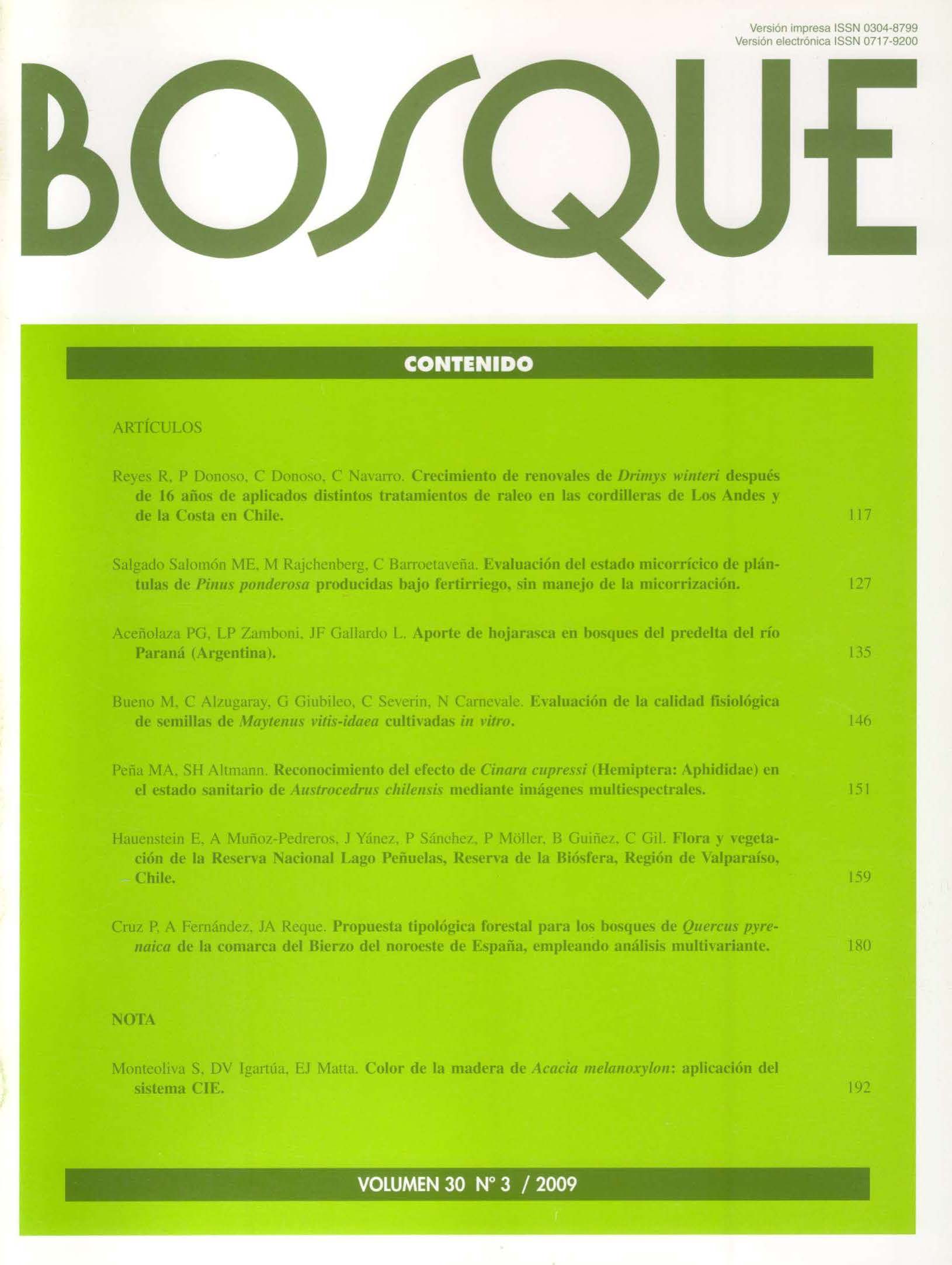Main Article Content
Dec 31, 2009
Abstract
Litter production in four forests of the alluvial plain of the pre-Delta area in the Paraná River (Argentina) was studied during the period 1998-2002. Monospecific forests dominated by Salix humboldtiana (SSh) and Tessaria integrifolia (STi) presenting similar production (6.8 ± 1.2 and 6.5 ± 1.3 Mg dry matter ha–1 yr–1, respectively), and pluri-specific forests of Albizia inundata (MAi) and Nectandra angustifolia (MNa), presenting statistical differences in their average production. Plurispecific forests also showed significant differences between them in terms of production (3.3 ± 0.5 and 9.6 ± 1.1 Mg dry matter ha–1 yr–1, respectively). The highest values of litter production were obtained during 1998 (year of the highest overflooding); afterwards, it started decreasing during the period studied. A seasonal pattern of litterfall was enhanced with the flood pulse (spring-summer, primarily from November to February), except in the Mai forest, where trees are deciduous (autumn leaf abscission). Regarding the composition of the litter, leaves are the most abundant fractions (reaching 69% of the total in SSh forest), while reproductive structures account for less than 3% of the litter produced in all studied forests.


